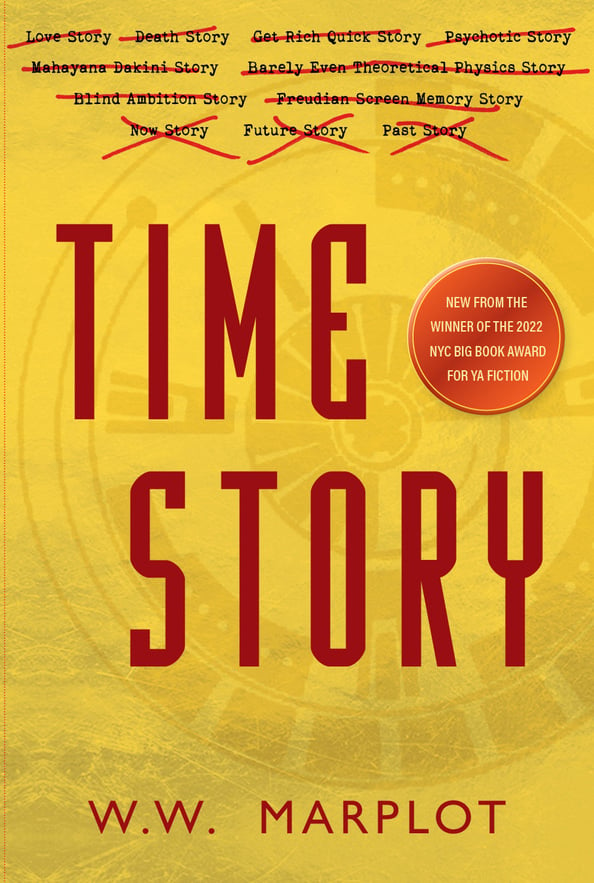There are three brothers. The eldest, Applemon, a genius already on to his third PhD at the age of twenty-two. Then Plunkett, a university student who seems to major in lazing around. And finally, the adopted, pliable, goofy youngster Woby who spends most of his time with Plunkett in his college dorm room. Woby and Plunkett stumble upon a time machine that they presume Applemon has created. The time machine is a belt, described as an “odd-looking corset-shaped apparatus”, with big buttons, seemingly difficult to program. When they first encounter the device they bicker about which classic rock event to go to – Jimi Hendrix at Woodstock, Live Aid, Led Zep at Madison Square Garden – but realize they don’t actually know the dates of any of those. Finally they settle on the assassination of JFK but the brief time trip reveals that of course it’s a time machine not a place machine and rather than the wished for Dealey Plaza, Woby finds himself precariously balancing on the edge of a pit at the under-construction building site of his brother’s dorm back in November 1963. The next trip is the classic, top- of-the-wish-list for any aspirant time traveler, “playing the winning lottery numbers before they are drawn”. And while their get-rich-quick scheming never quite plays out their meddling soon has unforeseen consequences that are rapidly escalated by the appearance of Trice, a girl trapped by time and space itself.
Chronological confusion can be par for the course in a novel centered on time travel and author W.W Marplot foreshadows this by a character pronouncing in the prologue, or “Chapter Zero” as it appears in the book: “That’s the problem, the timing. In a time story, it only makes sense to tell it in the order it couldn’t have happened, you know what I mean?” And indeed there are moments in TIME STORY where it’s difficult to be entirely sure what is happening and when. And that’s allowing for the benchmarked “agreed upon normal time” or AUNT that the characters resort to using when trying to explain what’s going on. That said, the book is never less than thoroughly entertaining. Marplot’s writing, with its seemingly impulsive side-tracks and diversions, is effervescent and full of wit. His characters very well drawn and their dialogue sparkling. Even when the plot threatens to spiral into total chaos it’s a thrill to be along for the ride.
Amongst the jumping backwards and forwards through the eras, Marplot raises scientific and philosophical questions. By including Applemon’s ex-girlfriend Ariel, as a studious psych major who is using the younger brothers as the subject of her studies, the author opens up the opportunity to investigate their adventures through, mostly Jungian, psychology. As is later revealed by the references at the end of the book, the author is unafraid to pepper his writing with allusions to mystics and poets though these never once get in the way of what can be read as a straight ahead fantasy romp full of high-jinks and plenty of flashes of comedy. The high-brow stylings are a perfect complement to the familiar low-brow sci-fi time-travel staples.
With TIME STORY, author W.W Marplot has created a highly entertaining page-turner. Blending the paciness of a YA novel with the philosophical maturity of serious adult literature, it’s a sci-fi romp well worth any reader’s time.
~Kent Lane for IndieReader

